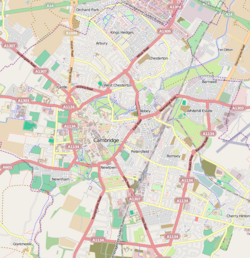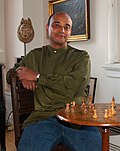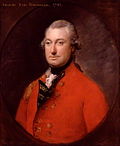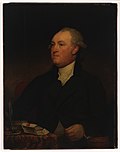| Clare College | |
|---|---|
| University of Cambridge | |
 Old Court, Clare College | |
 Arms: see below | |
| Scarf colours: black, with two equally-spaced narrow yellow stripes | |
| Location | Trinity Lane (map) |
| Coordinates | 52°12′19″N0°06′54″E / 52.2052°N 0.1150°E |
| Abbreviation | CL [1] |
| Established | 1326 |
| Named after | Elizabeth de Clare |
| Previous names | University Hall (1326–38) Clare Hall (1338–1856) |
| Sister colleges | St Hugh's College, Oxford Oriel College, Oxford |
| Master | Loretta Minghella |
| Undergraduates | 484 (2022–23) |
| Postgraduates | 266 (2022–23) |
| Endowment | £187.5m (2024) [2] |
| Visitor | Chancellors of the University ex officio [3] |
| Website | www |
| UCS | ucs |
| MCR | mcr |
| Boat club | www |
| Map | |
Clare College is a constituent college of the University of Cambridge in Cambridge, England. The college was founded in 1326 as University Hall, making it the second-oldest surviving college of the University after Peterhouse. It was refounded in 1338 as Clare Hall by an endowment from Elizabeth de Clare, and took on its current name in 1856. Clare is famous for its chapel choir and for its gardens on the Backs (the rear of the colleges that overlook the River Cam). It is a registered charity. [4]































